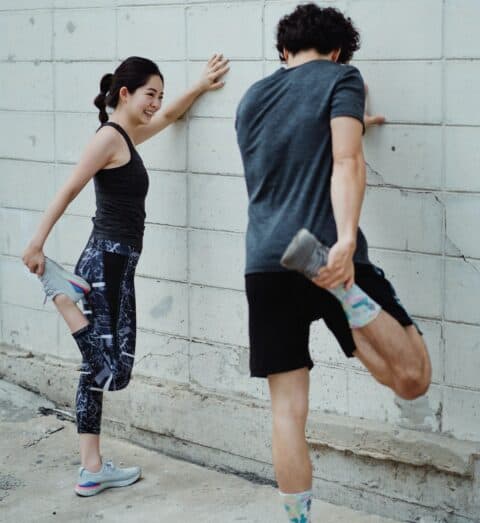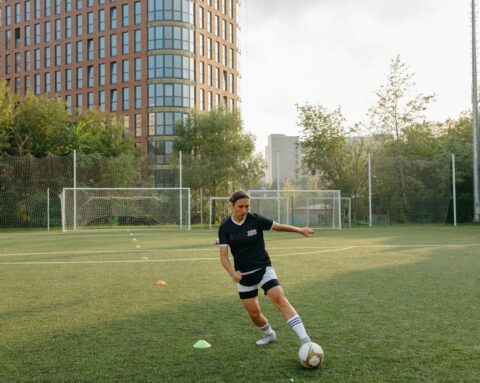Tennis Elbow
Tennis elbow is defined by a swelling of the tendons that causes you pain and discomfort in the arm and elbow. Despite its name, tennis elbow can be caused by any repetitive gripping activities. It is especially common if you partake in gripping activities that mostly use your thumb and first two fingers. It is an extremely commonly occurring injury. Tennis elbow is the main reason that people visit their doctor for elbow pain!
Causes of Tennis Elbow
Tennis elbow doesn’t occur overnight, in fact, tennis elbow usually develops over a long period of time due to repetitive motions such as gripping a racket while swinging it. Motions such as these can cause strain and stress on the tendons that causes microscopic tears in the tissue. The first symptoms you will tend to experience are pain and tenderness in the bony outside area of your elbow. Injured tendons connect to the bone in this area which can cause the pain to be felt in the lower or upper arm. Other potential signs of tennis elbow include stiffness in the neck and tenderness. You will find that the majority of elbow movements will not cause any pain despite that being the area of injury.
Did you know that is possible for you to be experiencing the symptoms of tennis elbow without actually suffering tennis elbow? There are many instances of elbow pain that occur from neck injuries! Therefore, it is vital to have your neck and surrounding areas checked by a physical therapist to either confirm or rule out where the tennis elbow sensation is stemming from. If this is not properly handled, chronic tennis elbow may occur!
There are many different reasons why tennis elbow may occur outside of actually playing tennis. Some of the most common examples are having a poor technique in the activities you are doing, having low forearm strength of tighter muscles and excessive wringing or gripping activities. One of the most common reasons we see for tennis elbow occurring outside of a sporting environment is when people overuse the muscles during unaccustomed hand exercises. Activities such as painting, hammering or excessive typing can lead to the development of tennis elbow.
Diagnosis of The Injury
Your tennis elbow condition will be diagnosed by a doctor through an examination of clinical tests and your prior injury history. These tests will include actions such as flexing your elbow, arm and wrist to examine where the pain is. Other options to ensure the diagnosis is correct are to use MRI or X-ray technology.
Treatment
Whilst there are many cases of tennis elbow healing on its own, it is important to get a second opinion from your physical therapist as it has been proven to be a highly successful method of treating tennis elbow. Once a thorough assessment has been conducted by your physical therapist, a strategy will be developed to recover you to full fitness based on your lifestyle and symptoms. There are many different options for treating tennis elbow and no two cases will be identical. Rehabilitation options include electrotherapy, joint mobilisation, stretching, neural mobilisations, massage, kinesio taping and elbow braces. Through effective physical therapy, you will be able to achieve restoration of your muscle length, strength, joints, motion and function, a vast reduction of elbow pain and the facilitation of tissue repair.
In some situations, a tennis elbow brace can be a good option for aiding recovery. The brace is designed to reduce the stress placed on your muscles and joints when you try to grip things. If you try to use an elbow brace and don’t find it to be effective, that is usually a sign that you have a higher chance of re-injury and should speak to a physical therapist immediately. If you do not get proper attention for tennis elbow you should expect the recovery to last from 6 months to up to 2 years and will be extremely vulnerable to reinjury.
Return to Play
Once you are further along in your recovery process you will be able to start returning to your usual activities with the guidance of your physical therapist. It is important not to rush your recovery and ensure you don’t push yourself too hard before the elbow has properly healed. Some signs that you may be ready to return to your former activities include; when your elbow is no longer swollen, when you can flex your elbow and move it without pain, your elbow feels a similar level of strength to your other elbow, bearing weight on your arm and gripping objects doesn’t cause pain.
Finally, make sure to focus on avoiding reoccurrence of the injury by having the right equipment and learning to use the correct technique. Always stretch and warm up properly before exercise and stop if you feel pain. The Studio Musculoskeletal team will use our state-of-the-art equipment, knowledge and techniques to assist with tennis elbow in the most efficient and effective way possible. If you have experienced any of the symptoms mentioned in this article it is important to get in touch with us as soon as possible.






